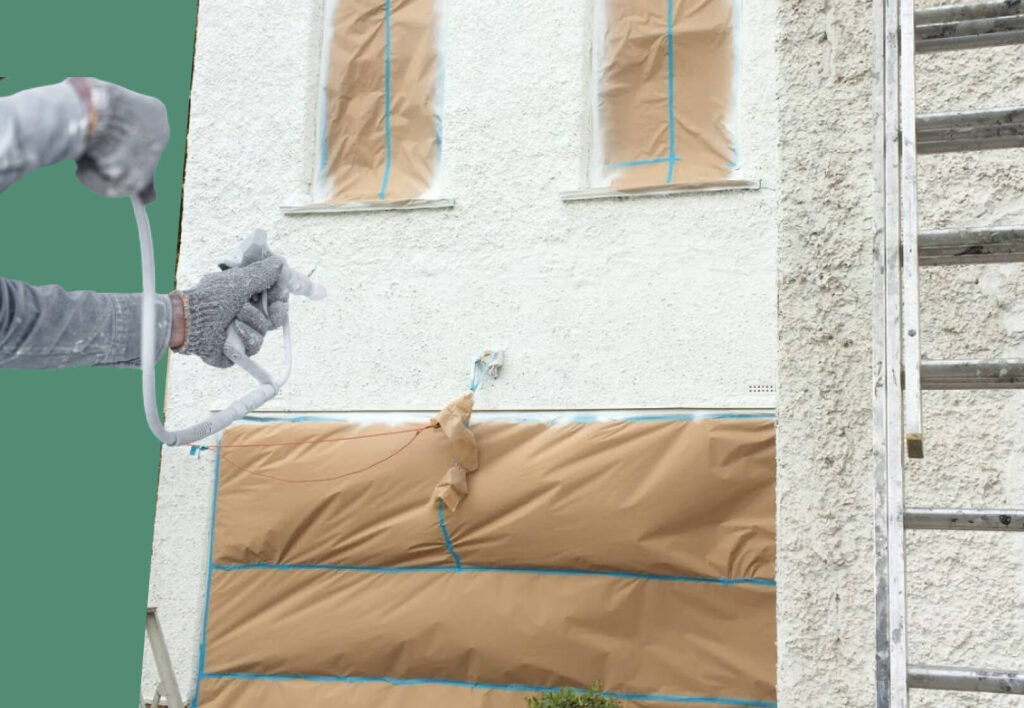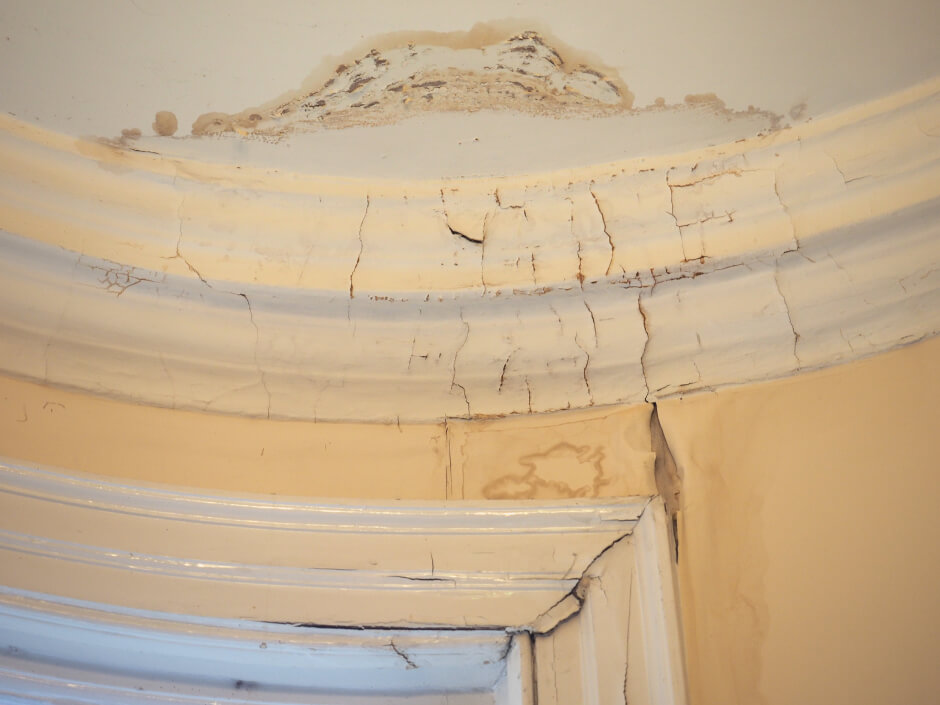Whether the option they choose is traditional rendering or one of the more modern wall coatings which appear and act as particularly thick and hard-wearing masonry paint, there are many reasons which homeowners cite when discussing their decision to add a protective wall coating to their home.

It goes without saying that one of the most obvious reasons is aesthetics. In older buildings, protective wall coatings can be used to disguise and cover unsightly or damaged brickwork, whilst with newer homes, they can be used to give a sense of individuality, especially if the home in question happens to be on a new housing estate where many of the houses are built to the same specifications.
These wall coatings can then be coated in bright paint, pebble dash or even a mock-Tudor wooden framing depending on the owners’ personal style and tastes.
After the initial benefit of the appearance of the home in question, there are also a number of practical benefits which can be applied.

A further benefit of this additional layer of insulation is that protective wall coatings can help to reduce and minimise damp. Not only can damp cause unsightly staining on walls and ceilings, but it can also leave a smell and moist atmosphere which are extremely unpleasant.
Damp can also permanently damage furniture, fixtures and fittings and create problems with the building’s structure, like the weakening of the entire property through added moisture to the bricks and mortar.
It is little wonder, then, that homeowners will take any means necessary to rid themselves of damp. Furthermore, given that damp can seep in through even the tiniest cement crack, any steps which homeowners can take to permanently rid their houses of any such cracks are welcomed and not surprising. Adding protective wall coatings that cover up any cracked bricks or cement and provide a waterproof layer is then a reliable way of avoiding the introduction of damp or preventing damp from causing further damage.
One of the main reasons people cite is the extra layer of insulation the protective wall coating can add to their home.
Although this manifests itself in many ways, it can be particularly useful in the prevention of draughts through the home. Please note, to reduced draughts in your home, it is important to start with window draught-proofing prior to walls insulation.
This could ensure that the home is warmer during winter or able to maintain and regulate a cooler temperature during a hot summer without hot air entering the home, which could prove particularly useful during still evenings.
As has already been mentioned, damage to the bricks and mortar of a building can seriously damage its overall structure and could, over time, render it unsafe.
Therefore, any measures which may be taken to strengthen the structure are welcomed.
Although some of the more modern protective wall coatings may appear quite thin, they can be extremely useful in protecting and fortifying the structure of a building, whether or not damage has occurred.
For the uninitiated, the prospect or thought of thermal wall coatings might sound a little “space age” and even overly complex. Thankfully, the reality is much simpler. A thermal wall coating is one which is increasingly popular and to all intents and purposes appears to look like a very thick paint.
They can be applied to the front, side and rear of a home either by hand, using rollers or by an airless spray which is either operated by a professional or can be rented out from a plant hire specialist for use by the building or homeowner.
There are many benefits to using thermal wall coatings
Aesthetics
The beauty of thermal wall coverings is that although they appear just like a thick coat of pain, they have been specially and specifically developed to last for many years and to retain their good looks for this time.
Whilst render and other older forms of wall covering lost their looks, cracked or damaged long before their time, thermal wall coatings are built to last – and that even means in Britain’s harshest weather. Many manufacturers guarantee a lifetime of up to 15 years on their wall coatings and some maintain that they will last even longer than this.
No more damage
The largest reason for any kind of wall covering or coating is to tidy up a previous wall coating which is in a poor condition. It may be that a thermal wall coating is used on top of render which is still structurally sound but which no longer looks appealing to the owners of the property or anyone passing by. Alternatively, the thermal wall coating may be the first ever application of any kind of wall covering which is going directly onto bare bricks which are cracking or simply look less than appealing to the outside world.
Environmental
In the past, it was considered that any paint or wall coating which was required to last would need to be solvent based rather than water based as this would ensure that they were not disrupted by water. However, thanks to modern manufacturing techniques, the majority of thermal wall coatings are now water based making them even more environmentally appealing.
Furthermore, the additional layer of insulation they give to a property means there is less chance of the heat escaping and ensures that the home is more energy efficient; thus reducing its carbon footprint.
Protection
It’s no secret that the weather of Great Britain can be a little tricky at the best of times. From a monsoon to a heatwave in a single day seems typical of today and for that reason, homes in Britain must be able to cope with a variety of weather elements and not lose their structural soundness during any adverse conditions.
Insulative paint can help to protect and enforce the structure of a property, meaning that it is likely to retain its structure and integrity longer than it might have been able to without the aid of the thermal wall coating.
Ever walked down a street and seen every house looking almost new except the odd one or two?
It is almost a certainty that the houses that are looking good have an external render coat and the ones that look a bit shabby have not been painted in a while.
Before you blame the owners bear in mind the effort and expense of getting paint, painters, scaffolding and then the cleaning off of the old peeled paint. You can see why they might try to drag out the life of their last effort. The fact is that traditional masonry paint is a chore to maintain and eventually an expensive coat to keep.
If you are thinking of having your masonry paint removed and considering a different coating then here are 10 points to point out the problems of masonry paint: